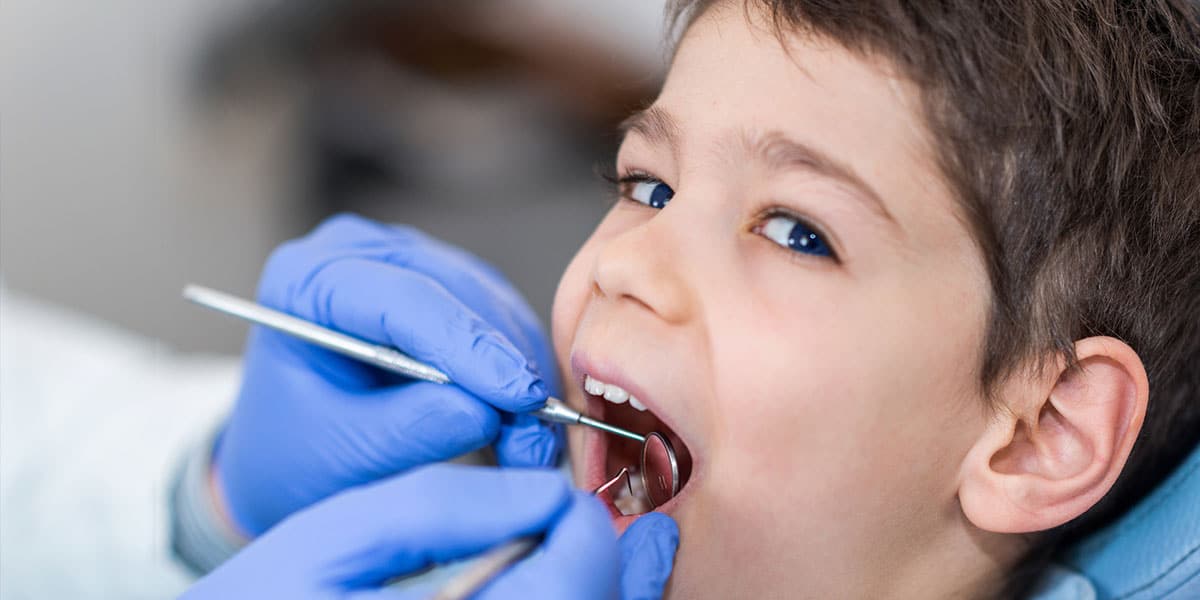Restorative and Cosmetic Dentistry for Children

ABQ Pediatric Dentistry provides restorative and cosmetic dentistry for children in Albuquerque, NM. Call 505-888-3520 to learn more and schedule your appointment.
Composite (White) Fillings
Dental fillings are used to patch holes that dental decay creates in a tooth. Dr. Tasker uses composite (white) fillings (that do not contain BPA or amalgam) in order to make a tooth healthy and strong again. Decay that is large or close to the nerve are not good candidates for white fillings and may require other treatment options.
Pulp Treatment (Pulpotomy/Pulpectomy/Baby Root Canal)
When decay is large and has reached the nerve of the tooth, Dr. Tasker may recommend a pulpotomy or pulpectomy. The goal of this procedure is to remove the diseased dental pulp (the nerve). A crown is then placed to cover the entire tooth.
Dental Crowns
When tooth decay is large and cannot be restored with a filling due to the size/extent of the cavity, a crown may be recommended. Crowns completely cover the remaining tooth structure after the decay has been removed. We offer several different options as crowns are made of different materials (stainless steel, porcelain, zirconia or combinations of these materials). Dr. Tasker will discuss the pros and cons of each option based on the size of decay and location of the tooth in your child's smile (front tooth vs. back tooth).
Extractions
It is always our goal to help your child maintain their natural teeth, but sometimes teeth need to be removed. Severely decayed or cracked teeth may not be able to be saved with fillings or crowns, and may need to be extracted. Wisdom teeth, extra teeth or crowded teeth are other circumstances that indicate an extraction. Dr. Tasker always has your child's comfort in mind and may perform the procedure in-office or refer your child to an oral surgeon.
FAQs About Restorative & Cosmetic Dentistry
How do I know if my child has a cavity?
Often the first indication that your child has a cavity is complaints about toothaches and pain when eating sweet, cold, or hot foods. Visually, you may notice light brown spots on the teeth; as cavities progress, these spots get darker and eventually turn into holes without treatment.
Do you need to fill cavities in baby teeth?
We offer silver diamine fluoride treatment which can help prevent early signs of decay from getting worse, but generally speaking, when a child has a cavity in a baby tooth and the baby tooth is years away from falling out naturally, it should receive a dental filling. Untreated tooth decay can cause pain and the spread of cavities to other teeth. If a tooth is extracted too early, a space maintainer is needed to ensure there is room for the adult tooth to erupt, so simply filling the existing baby tooth is preferable.
Are root canals safe for toddlers?
Yes, root canals are safe for toddlers—and they’re certainly much safer than leaving an infected tooth untreated. An infection in the pulp of a tooth is very painful and it can spread to other teeth, cause abscesses, and infection can even travel to other parts of the body.
Does my child really need a crown?
When a tooth has sustained more damage than can be repaired with a dental filling, a crown is necessary. The alternative would be to extract the tooth, but because a space maintainer is needed afterwards to prevent orthodontic issues, a crown is a more economical solution.
How long does a baby tooth extraction take?
Single tooth extractions of baby teeth are simple in-office procedures that usually take under an hour to complete, depending on your child’s comfort level and the sedation needed.
